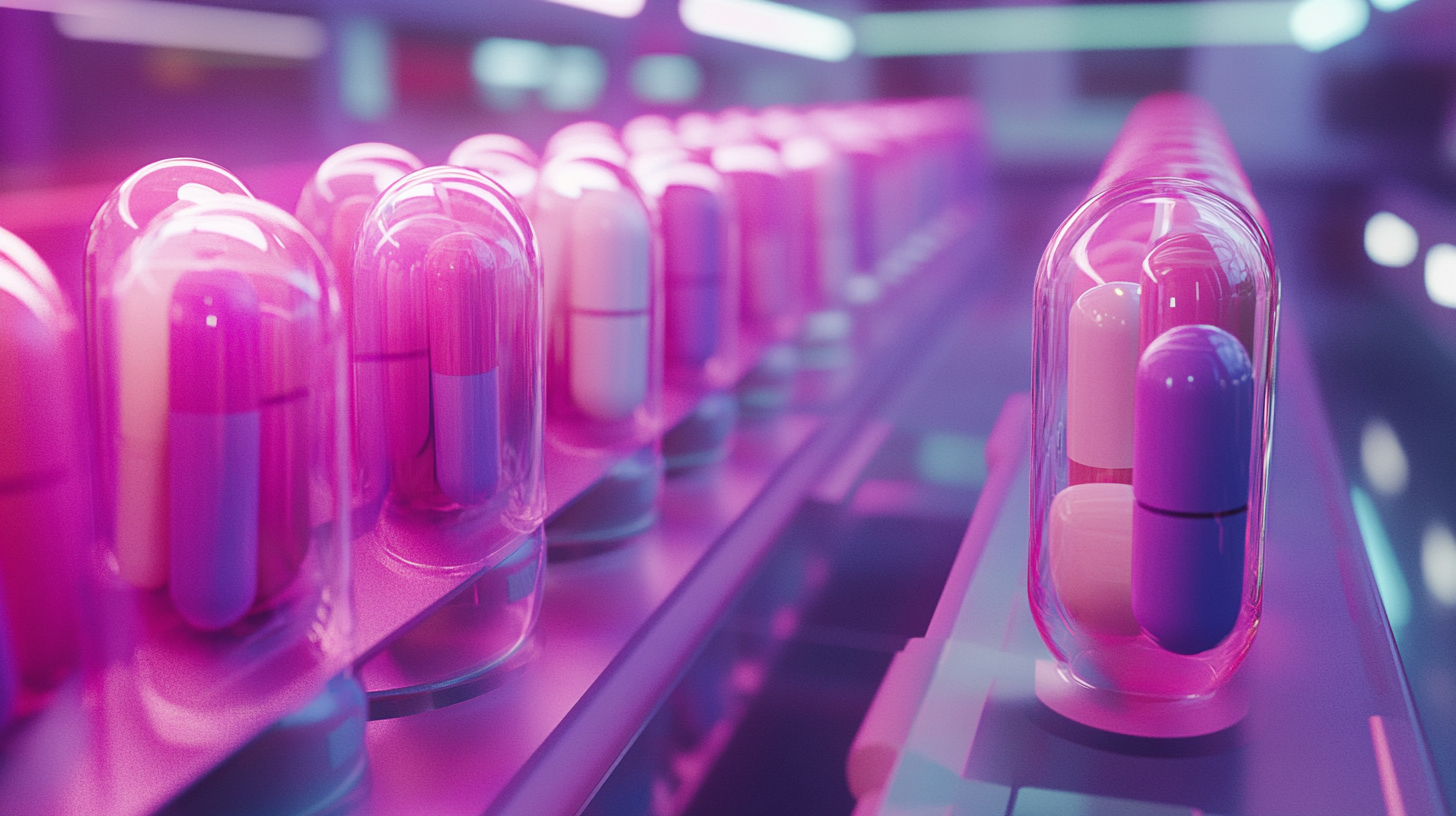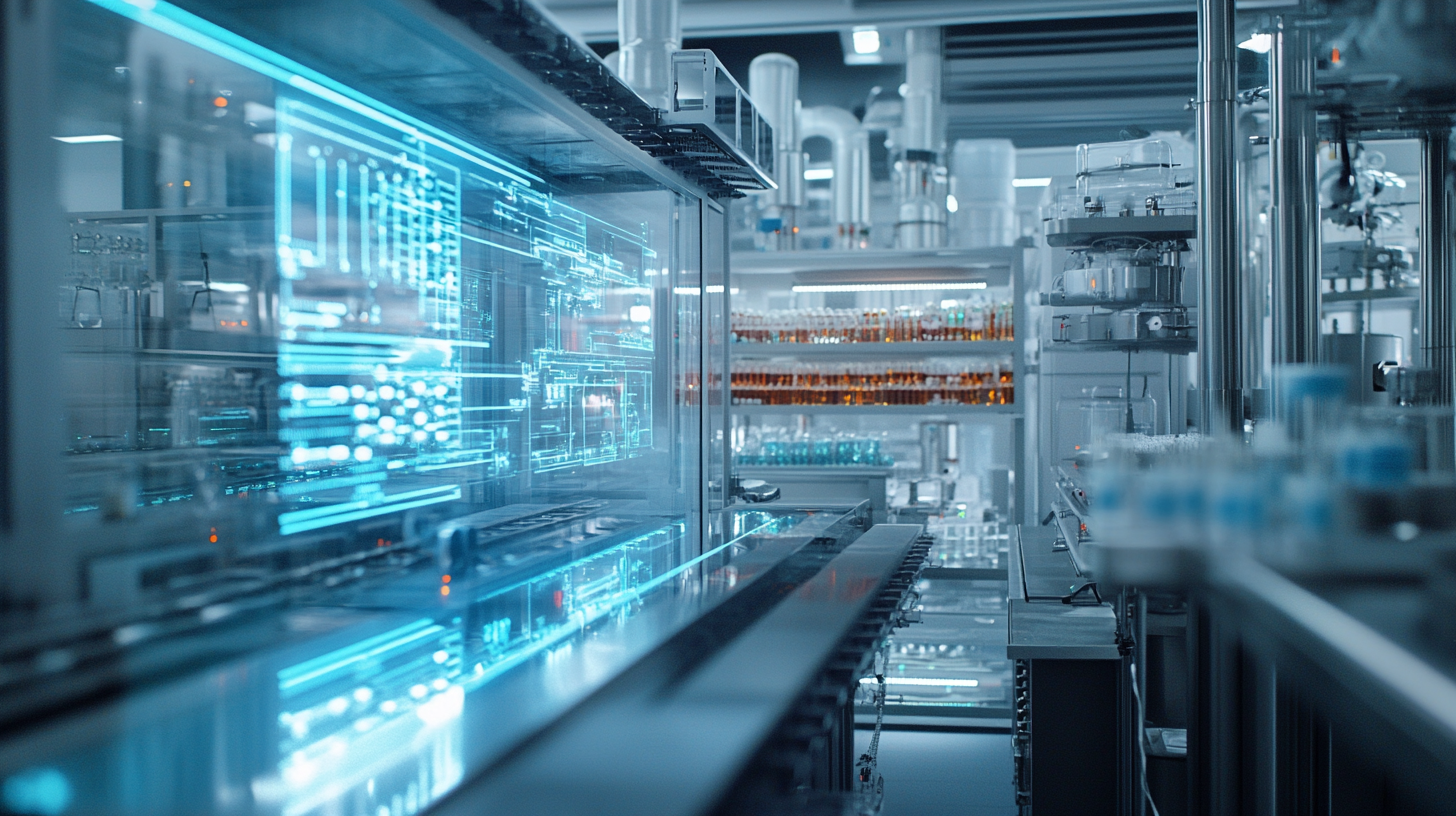The pharmaceutical industry is undergoing a significant transformation driven by innovations in Pharmaceutical Technology, which are fundamentally reshaping the way products are developed, tested, and distributed. According to a recent report from GlobalData, the global pharmaceutical technology market is expected to reach $200 billion by 2025, reflecting a robust compound annual growth rate (CAGR) of approximately 7.5%. This growth is propelled by advances in biologics, personalized medicine, and the integration of data analytics and artificial intelligence in drug discovery and development processes. As a result, stakeholders are increasingly focusing on adopting these innovations to enhance efficiency, reduce costs, and ultimately deliver better therapeutic outcomes to patients globally.
As the landscape of Pharmaceutical Technology continues to evolve, buyers across the globe must stay informed about emerging trends and technologies to make strategic decisions. The increasing complexity of drug development requires a more collaborative approach, integrating various technologies such as machine learning and the Internet of Things (IoT) to streamline processes and improve connectivity across the supply chain. A report from Frost & Sullivan highlights that over 70% of pharmaceutical companies are investing in digital transformation initiatives, marking a shift towards more agile and responsive operational frameworks. This blog will delve into the key innovations in Pharmaceutical Technology that are shaping the future and providing invaluable insights for global buyers navigating this dynamic market.

Innovative drug delivery systems are transforming the way medications are administered and enhancing patient compliance significantly. Traditional methods often lead to inconsistent drug absorption and require patients to adhere strictly to dosing schedules, which can be challenging. In contrast, advanced drug delivery systems, such as transdermal patches and smart delivery devices, provide controlled release of medications, allowing for more consistent plasma concentrations and improved therapeutic outcomes. The market for transdermal drug delivery systems is poised for remarkable growth, with projections suggesting it could reach approximately USD 235.3 billion by 2030. This growth is driven by an increasing demand for alternatives to oral medications, particularly in managing chronic conditions. These innovative systems not only enhance patient comfort by offering needle-free administration but are also designed to improve adherence by simplifying the dosing process. Furthermore, advancements in smart drug delivery systems, particularly in fields like ophthalmology, are showcasing the potential to tailor treatments to individual patient needs. By using technologies such as micro-needling and biodegradable implants, these systems aim to reduce side effects and increase medication efficacy, ultimately leading to better patient outcomes and adherence. As the pharmaceutical landscape evolves, the focus on innovative delivery mechanisms will play a crucial role in overcoming barriers to treatment compliance, ensuring that patients receive the full benefits of their prescribed therapies.

Artificial intelligence (AI) is emerging as a transformative force in the pharmaceutical industry, fundamentally altering the landscape of drug discovery and development. According to recent industry reports, the global AI in drug discovery market is projected to reach USD 3.89 billion by 2024, growing at an impressive compound annual growth rate (CAGR) of 40.3%. This significant uptick can be attributed to AI's remarkable ability to process vast datasets and generate insights faster than traditional methods.
One of the most groundbreaking applications of AI is in the early stages of drug discovery. Machine learning algorithms can analyze biological data to identify potential drug targets, a process that previously required extensive trial and error. A recent study highlighted that AI can reduce the time spent on lead identification by up to 75%, thereby accelerating the entire drug development pipeline. Furthermore, AI enhances the efficiency of clinical trial designs, optimizing patient recruitment and site selection, which can lead to substantial cost savings and improved outcomes.
The integration of AI also extends to optimizing molecular interactions at a granular level. The advent of quantum computing further amplifies this potential, enabling researchers to simulate complex molecular interactions quickly and accurately. This fusion of AI and quantum computing signifies a pivotal shift in how pharmaceutical companies approach drug development, emphasizing the growing importance of technology not just as a tool, but as a driving force in the discovery process. As AI continues to evolve, the pharmaceutical industry stands on the brink of unprecedented innovation and efficiency.

The biopharmaceutical sector is witnessing a transformative phase driven by innovative technologies and shifting market dynamics. As noted in the recent report by Coherent Market Insights, the U.S. non-oncology biopharmaceuticals market is projected to experience significant growth from 2025 to 2032, underscoring the expanding demand for therapies beyond cancer treatments. This trend reflects a broader shift towards personalized medicine and the necessity for targeted therapies that meet the unique needs of patients.
Moreover, the integration of advanced data analytics, artificial intelligence (AI), and machine learning (ML) is revolutionizing the biopharmaceutical landscape. These technologies are enabling more efficient drug development processes and enhancing the precision of treatment options available to patients. According to market analysis, the biopharmaceutical process analytical technology market is anticipated to evolve significantly between 2025 and 2030, creating substantial business opportunities as companies seek to optimize their production workflows and improve product quality.
In Asia-Pacific, the demand for precision medicine is rapidly increasing, with leaders like Krishna Karnati from Cytiva noting the pivotal role that genomic medicine plays in shaping healthcare delivery in the region. As biopharmaceutical innovations continue to emerge, the global single-use bioreactors market is expected to surpass the USD 10 billion mark by 2032, highlighting the industry's transition towards more flexible and efficient manufacturing processes that align with contemporary market needs. These advancements not only enhance operational efficiencies but also position biopharmaceutical companies to better respond to patient needs on a global scale.

Advancements in personalized medicine are transforming the pharmaceutical landscape, allowing treatments to be tailored specifically to individual patient profiles. According to a report by Grand View Research, the global personalized medicine market is projected to reach approximately $3.71 trillion by 2025. This growth is largely driven by increased investments in biotechnology and genomics, which are essential for developing targeted therapies that consider a patient's genetic makeup, lifestyle, and environmental factors.
One significant innovation is the rise of genomic profiling, which is enabling healthcare providers to create customized treatment plans based on a person’s unique genetic information. For instance, studies published in the *Nature Reviews Drug Discovery* indicate that patients with specific genetic mutations respond more favorably to certain drugs, significantly improving outcomes in chronic conditions such as cancer. The shift towards such individualized therapies not only enhances efficacy but also minimizes adverse effects, thereby improving the overall quality of life for patients.
Moreover, the integration of artificial intelligence and machine learning is proving to be pivotal in personalized medicine. These technologies help in analyzing vast datasets from clinical trials and patient records to identify patterns that can inform treatment options. A report from Frost & Sullivan predicts that the AI-driven drug discovery market will be worth $5.3 billion by 2025, underlining the essential role of technology in refining treatment methodologies that cater to individual patient needs.
As the pharmaceutical industry embraces these innovations, it is poised to enhance patient care significantly, promoting a paradigm shift from one-size-fits-all approaches to more personalized, effective therapies.
The pharmaceutical industry is experiencing a significant transformation driven by sustainability efforts, particularly through the adoption of green chemistry initiatives. These practices aim to minimize the environmental impact of drug development from the very beginning to the end of the product lifecycle. By incorporating eco-design principles, pharmaceutical companies are focusing on creating medicines that not only treat illnesses but also safeguard the planet. This approach involves selecting renewable materials, reducing waste, and utilizing energy-efficient processes to produce medications sustainably.
The World Health Organization (WHO) has underscored the urgent need for a transition towards greener pharmaceutical manufacturing. This call for action encourages industry stakeholders to embrace sustainable practices that can lead to more responsible drug production and distribution methods. As the green chemistry market evolves, it introduces mega trends that compel pharmaceutical companies to innovate and create competitive advantages while adhering to environmental standards.
Moreover, recent discussions at industry conventions highlighted the delicate balance between maintaining high-quality standards and advancing sustainability goals. Companies are increasingly exploring ways to incorporate sustainable practices into their manufacturing processes, addressing both health outcomes and ecological considerations. The momentum towards a greener future in pharmaceutical technology resonates with the industry's responsibility to protect the environment while delivering effective healthcare solutions.